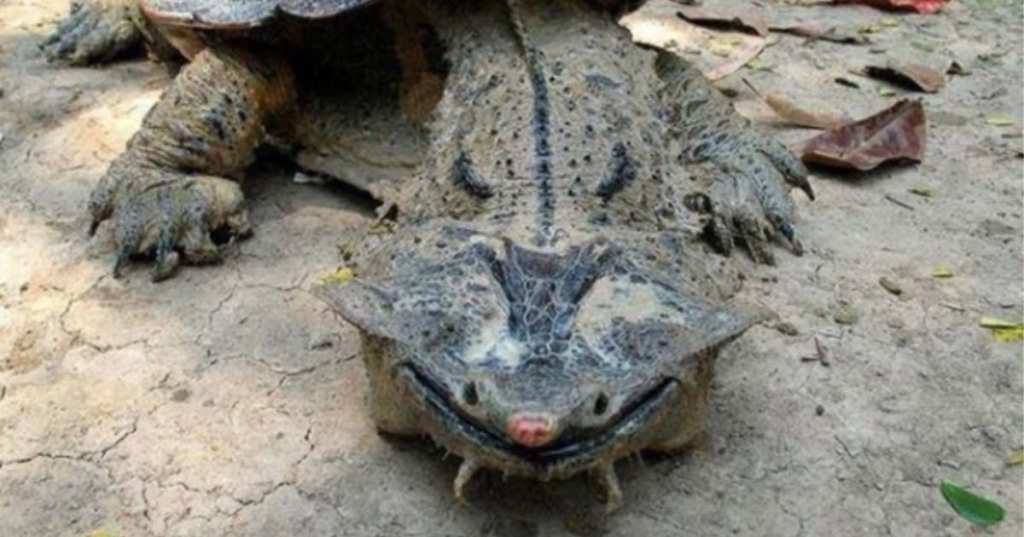Things are tough these days. And I don’t know about you, but I often find myself wearing this sort of over it, disgruntled, annoyed face, even though I want to be perky and positive for those around me. And when I try a smile…I just look sort of “this is fine everything is fine” deranged.
And this turtle, y’all? Well, based on his expression, he’s vibe-ing hard just like the rest of us.
https://www.instagram.com/p/B_icZ-AlC2f/
The mata mata turtle has long been known as “one of the most bizarre turtles in the world,” and now, thanks to genetic testing, we have a new species that takes that delightful weirdness to a whole new level.
Mata Mata turtles are part of the side-necked turtle family that are known everywhere for their beady, small eyes, large mouth, flat, three-sided head, and nose that resembles a snorkel. There was thought to be only one member of its Chelus genus, but new published findings concluded there’s another.
The research, published in Molecular Phylogenetics and Evolution, shows a split around 13 million years ago, right around the time the Amazon-Orinoco Basin started to separate into two rivers. The split caused genetic divergence in a few aquatic species in the region (that we know of), so it makes sense that the mata mata turtle could have been affected as well.
https://www.instagram.com/p/B_f0dUCBVcw/
Scientists captured wild turtles at night and took small skin samples, then returned to their lab for testing. The 75 DNA samples showed two genetically distinct species of turtles – Chelus orinocensis, which lives in the Orinoco and Rio Negro basins, and Chelus fimbriata, found only in the Amazon basin.
It was an interesting find, according to a statement made by Professor Dr Uwe Fritz of the Senckenberg Natural History Collections in Dresden.
“Although these turtles are widely known due to their bizarre looks and their unusual feeding behavior, surprisingly little is known about their variability and genetics.
Until now, we assumed that there are only one species of this armored reptile that ranges widely across South America.”
The turtle is an ambush predator; it uses its algae-covered skin flaps to hide in the mud and appear to be a rock. Then, it grabs a small fish (or other small prey) and sucks it down using a unique method made possible by the odd shape of its skull.
https://www.instagram.com/p/B_Z6nccByb2/
Mother Nature is so, so weird, y’all.
I think that’s why we’ve all been so obsessed with her for millennia.
https://www.instagram.com/p/B-T82A8HfmY/
The turtles strange but endearing face make it a popular catch for zoos and private collectors alike, which is one reason scientists like Professor Mario Vargas-Ramírez, the lead author on this study, believe it needs to be better understood.
“To date, this species was not considered endangered, based on its widespread distribution. However, our results show that, due to the split in two species, the population size of each species is smaller than previously assumed.
In addition, every year, thousands of these bizarre-looking animals end up in the illegal animal trade and are confiscated by authorities.”
Remember what your parents told you about nice and curious things when you were small? Look but don’t touch?
I think the natural world would be much better off if more adults would remember and follow those rules.
Don’t you?






